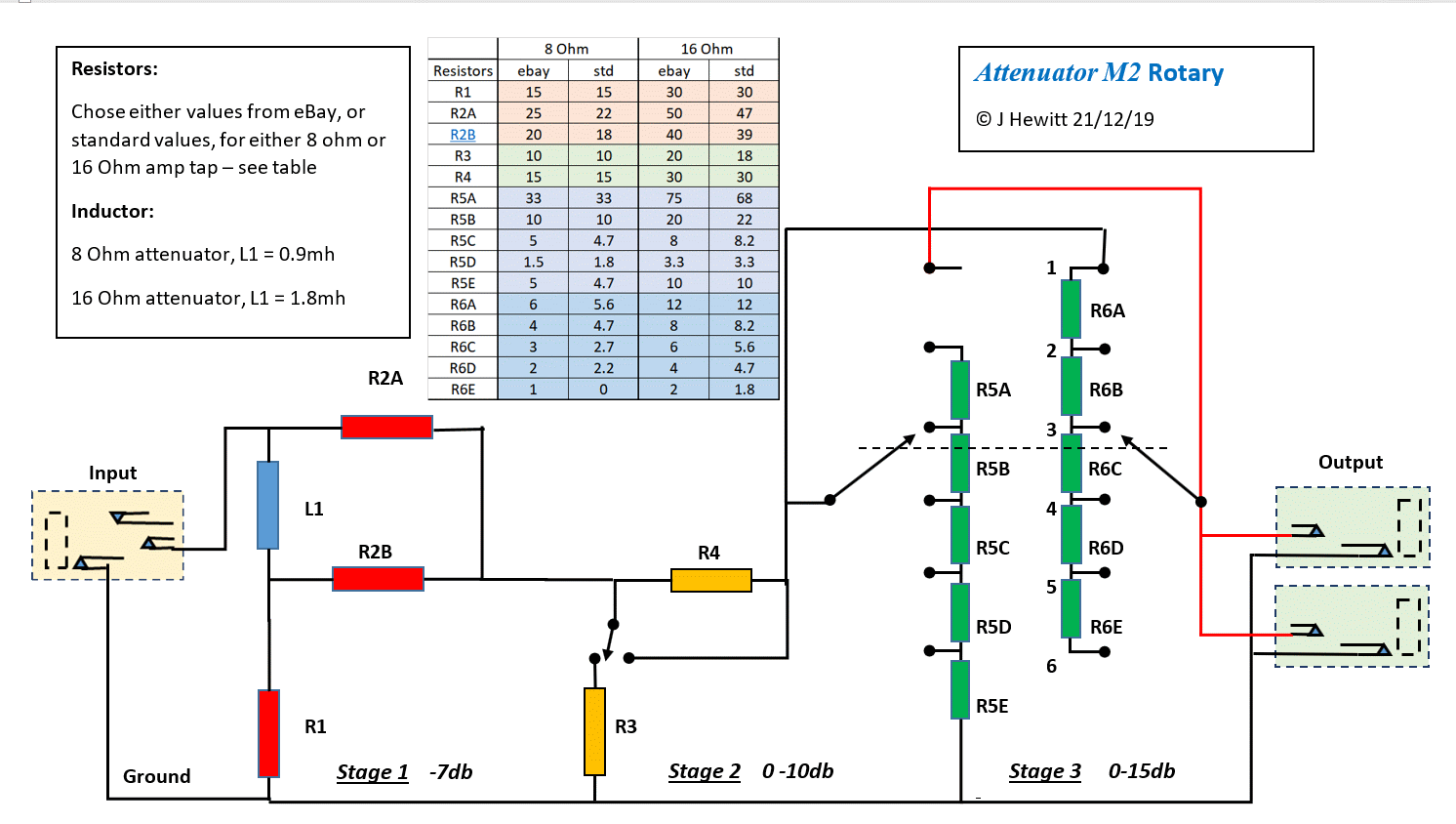Shipwreck0316
New Member
- Joined
- Apr 3, 2021
- Messages
- 16
- Reaction score
- 2
@JohnH
I understand how to simplify the M2v using one input jack (16 ohm) and a toggle switch to change between 8/16 ohm modes. What has me scratching my head a bit is how the R12, R13 and L2 section doesn't affect the other two inputs since it appears to be in parallel with the 8 ohm load. Does it have to do with using a switched jack? Also I'm having a hard time sourcing the inductors. Where do most people go to purchase L1 and L2?
I understand how to simplify the M2v using one input jack (16 ohm) and a toggle switch to change between 8/16 ohm modes. What has me scratching my head a bit is how the R12, R13 and L2 section doesn't affect the other two inputs since it appears to be in parallel with the 8 ohm load. Does it have to do with using a switched jack? Also I'm having a hard time sourcing the inductors. Where do most people go to purchase L1 and L2?

 While not as elegant as could be, the multiple toggle system is very reliable. I have searched for rotary switches with 10 positions and enough poles to handle the task of providing every switched/switchable level from Bypass to -31.5db in -3.5db increments. Capable units, with enough current capacity cost as much if not more than the rest of the attenuator's bill of materials! The most current listed build seems the best so far, with alternative values, etc, is in post #1165.
While not as elegant as could be, the multiple toggle system is very reliable. I have searched for rotary switches with 10 positions and enough poles to handle the task of providing every switched/switchable level from Bypass to -31.5db in -3.5db increments. Capable units, with enough current capacity cost as much if not more than the rest of the attenuator's bill of materials! The most current listed build seems the best so far, with alternative values, etc, is in post #1165.
